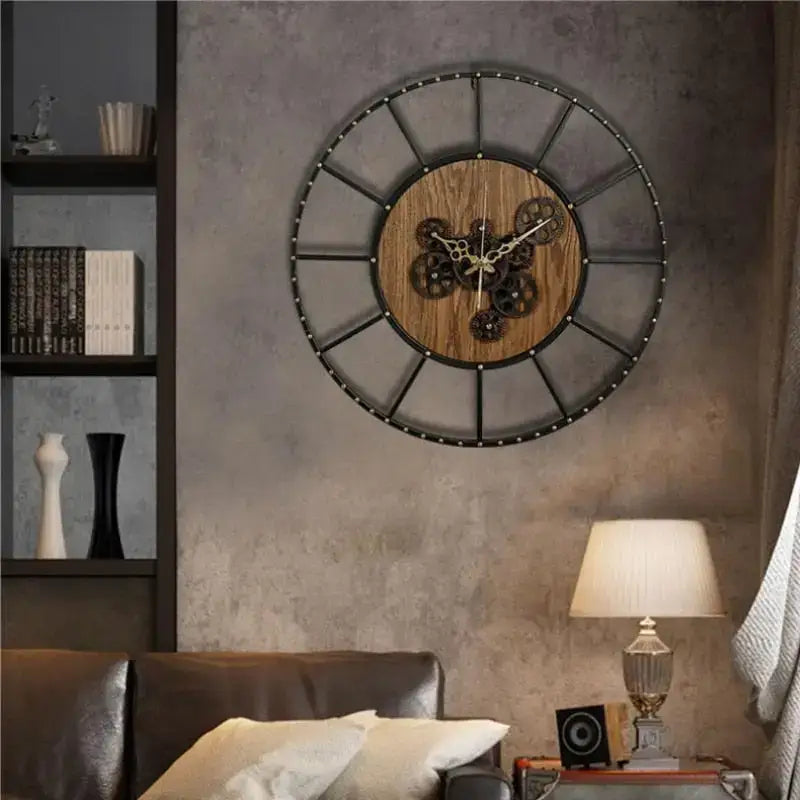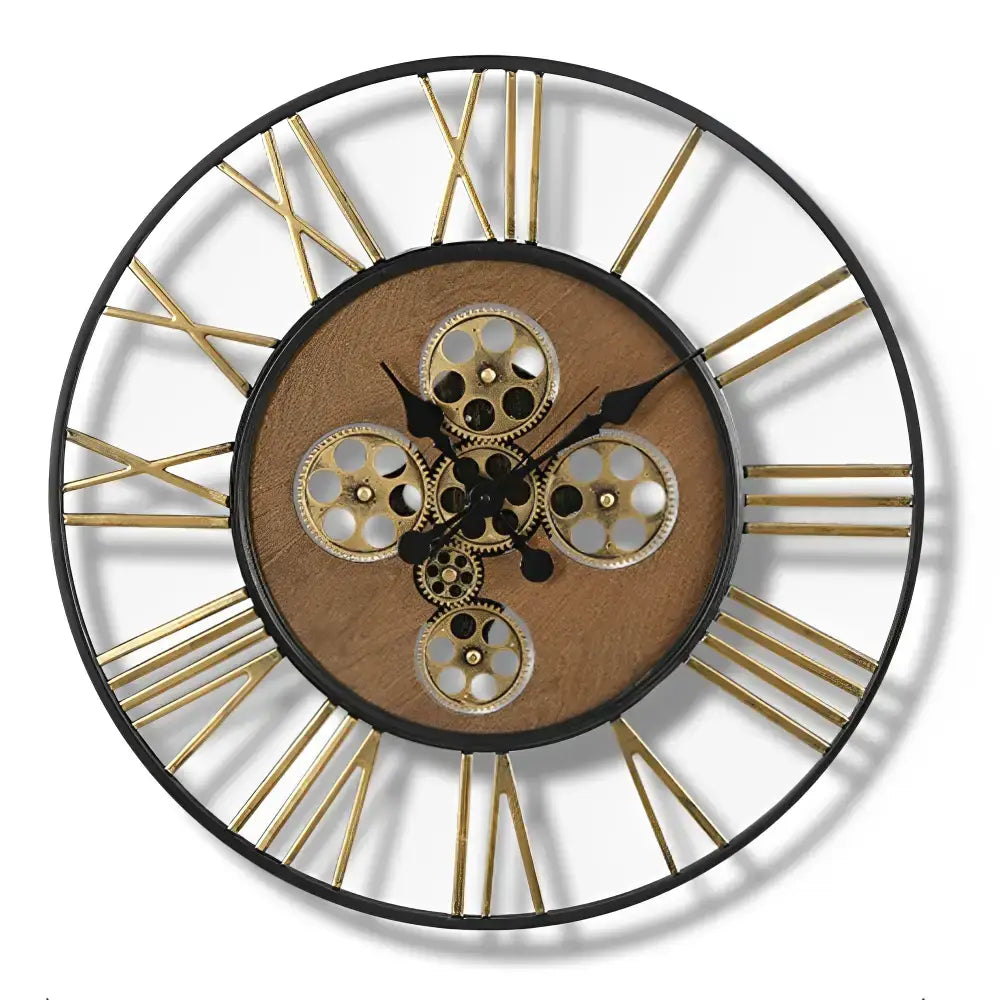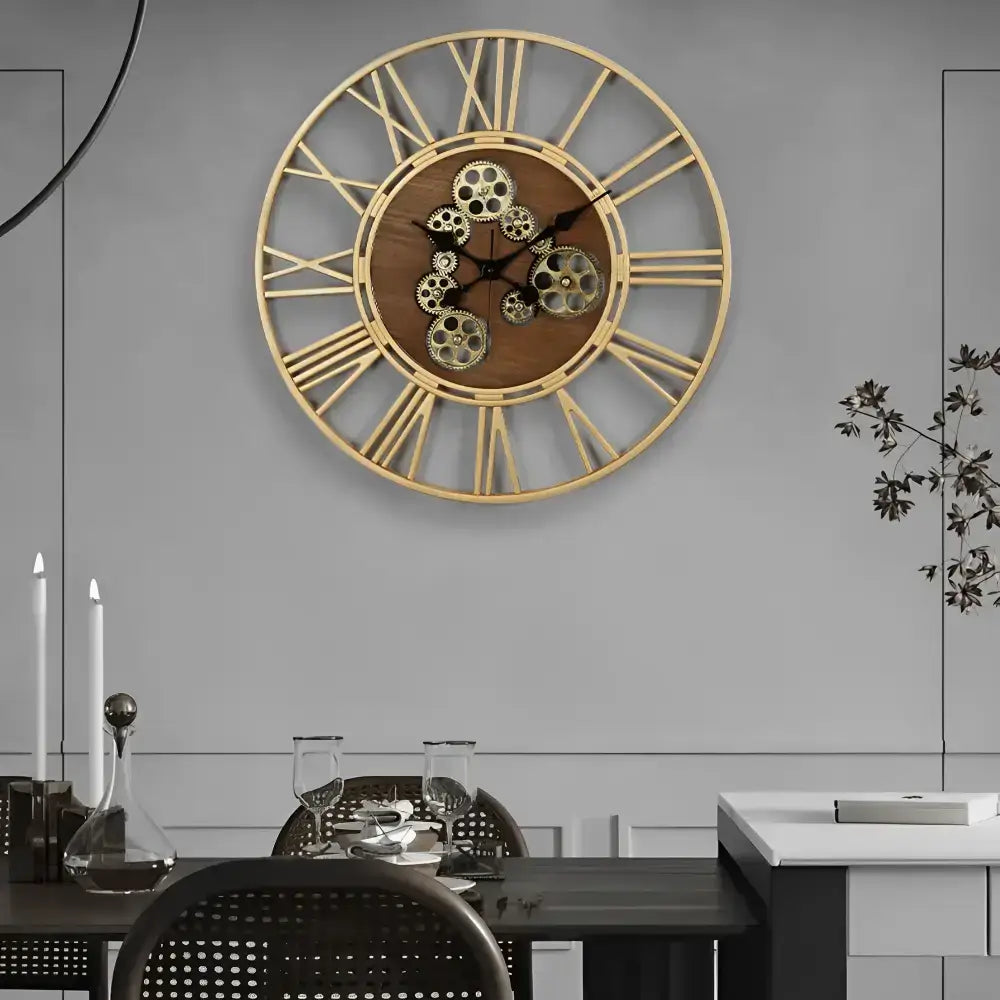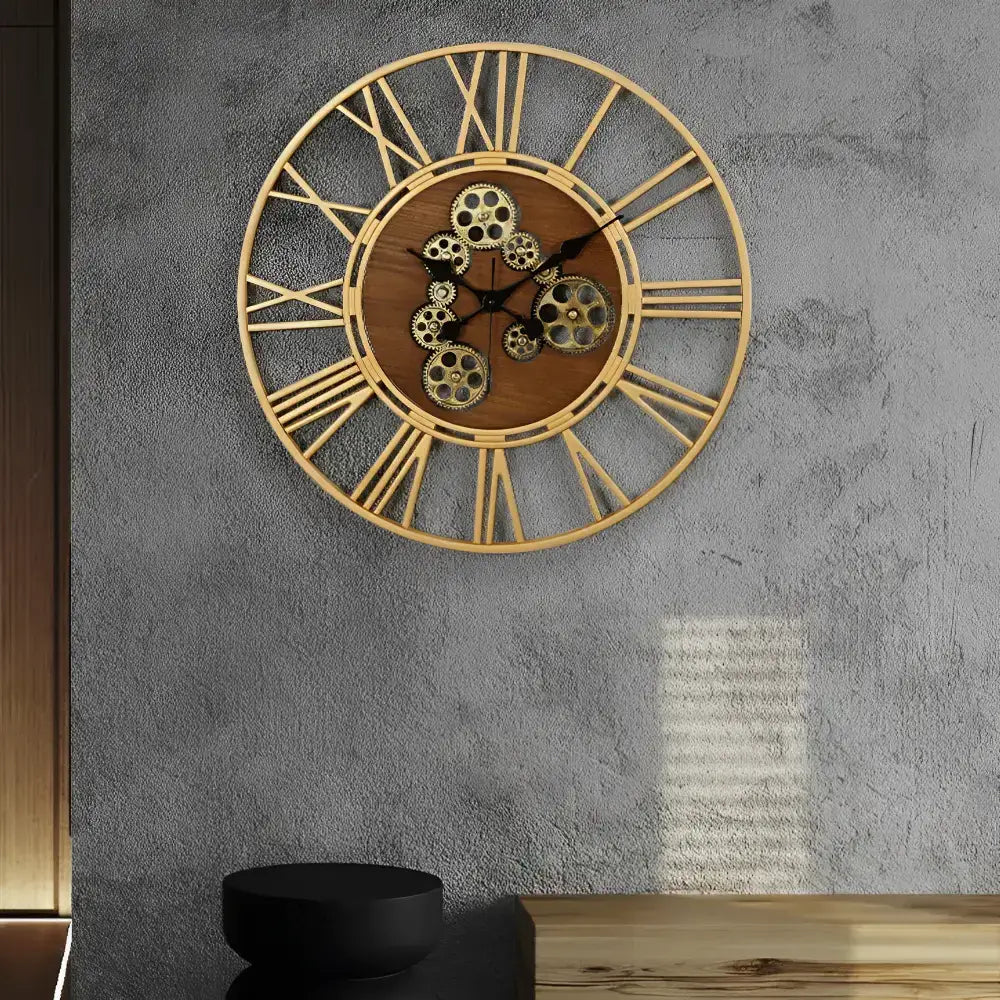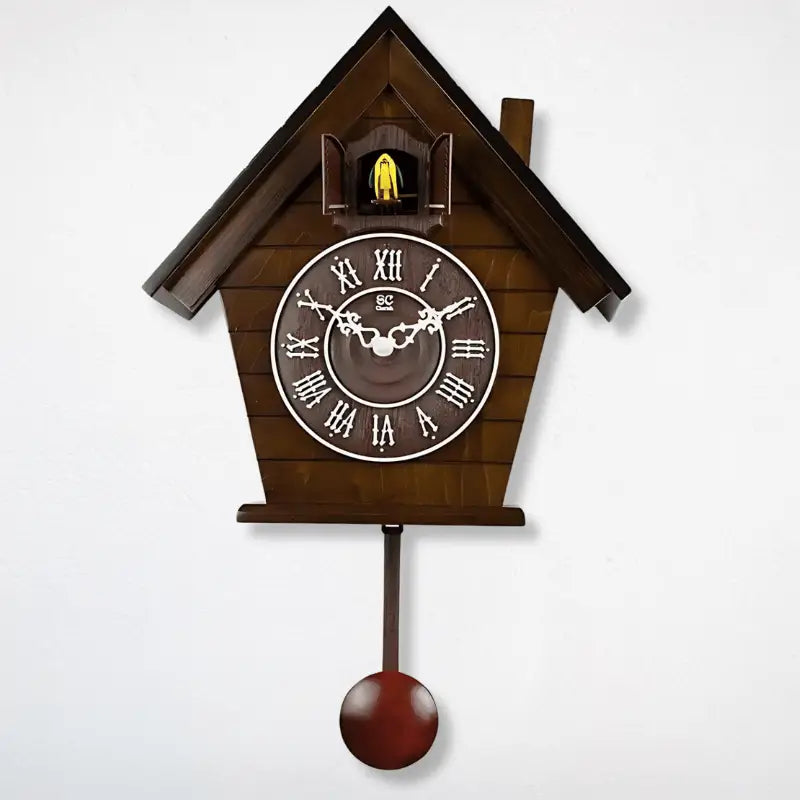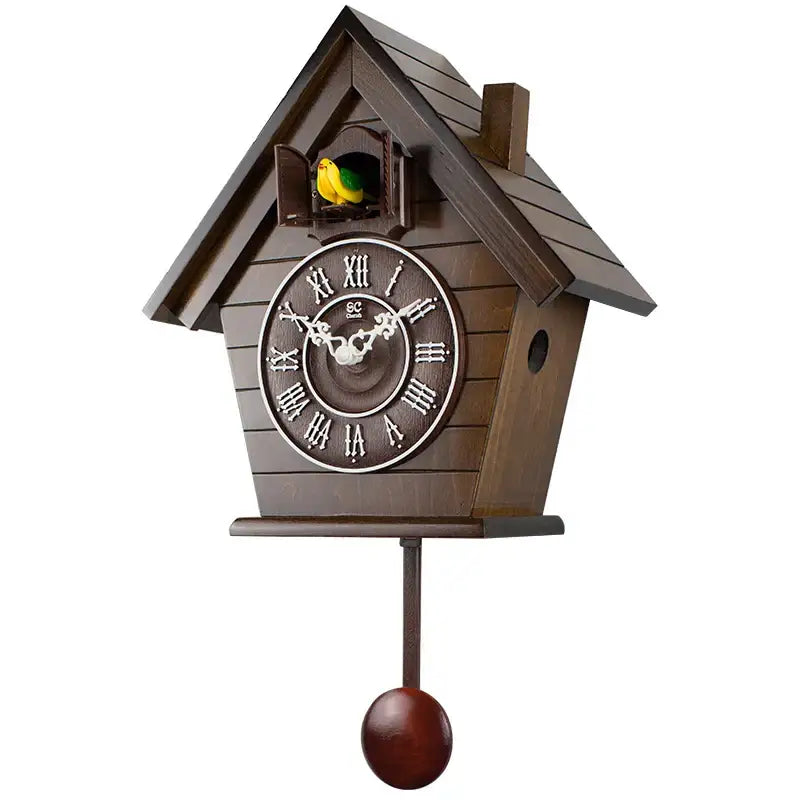Choose your option
Gear Roman Numeral Wall Clock
Choose your option
Choose your option
Gold Gear Roman Wall Clock
Choose your option
Mechanical Cuckoo Clock
Choose your option
Steampunk Pocket Watch Gear Wall Clock
Choose your option
Choose your option
Vintage Mechanical Wall Clock
Choose your option
Vintage Roman Gear Wall Clock
Choose your option
Vintage Steampunk Gear Wall Clock
Choose your option
Mechanical Wall Clock – Timeless Craftsmanship Meets Precision
The mechanical wall clock is not just a way to tell the time – it’s a living piece of history. Crafted with precision engineering and artistic mastery, it stands as a symbol of tradition and sophistication. Unlike battery-powered quartz models, a mechanical wall clock relies entirely on gears, springs, and escapements working together in perfect harmony. At CasaClock, we offer a curated selection of designs – from vintage classics to modern reinterpretations – each with its own unique story.
Why Choose a Mechanical Wall Clock?
In today’s digital age, a mechanical wall clock offers more than functionality – it brings character and timeless beauty to your space. Each tick and swing of the pendulum is the result of centuries-old horological expertise.
- Authentic Mechanics: Powered by traditional clockwork – no batteries, no electronics.
- Soothing Sound: The steady tick-tock adds warmth and atmosphere to any room.
- Statement Décor: A mechanical clock becomes a focal point in your home, whether you prefer rustic charm or luxury elegance.
- Built to Last: With proper care, these clocks can be passed down through generations.
The Art of Mechanical Timekeeping
Mechanical wall clocks work using energy stored in a wound spring or falling weights. This energy is released in precise increments via the escapement, regulating the movement of the hands. The process is a harmonious blend of mechanics and artistry, with each gear and pivot crafted to perfection.
Different Types of Mechanical Wall Clocks
When choosing your mechanical wall clock, understanding the movement type is essential. Each mechanism has its own personality and maintenance requirements.
1. Weight-Driven Clocks
These traditional models use suspended weights that slowly descend, providing energy to power the clock. They are often associated with vintage wall clocks and historical designs found in castles and heritage homes.
2. Spring-Driven Clocks
Compact and practical, spring-driven clocks store energy in a coiled mainspring. They require winding every 7 to 14 days and are a perfect choice for office spaces or smaller rooms.
3. Pendulum Clocks
A pendulum not only regulates the movement but adds mesmerizing visual motion. Many of our pendulum wall clocks combine classic mechanisms with elegant design elements.
Design Styles for Every Interior
Our mechanical wall clocks come in a range of styles to complement your interior décor:
- Classic Wood Frames: Perfect for rustic or farmhouse interiors.
- Metallic Industrial Designs: Ideal for loft apartments or modern offices.
- Luxury Finishes: Gold-plated details and handcrafted dials for upscale interiors.
- Minimalist Contemporary: Sleek lines and clean faces for a refined modern look.
Placement Ideas for Maximum Impact
Positioning your mechanical wall clock correctly enhances both its function and aesthetic appeal. Hang it at eye level in your living room, dining room, or hallway for the best viewing angle. For a dramatic touch, consider pairing it with a large wall clock arrangement or complementary artwork.
Buyer’s Guide – How to Choose the Right Mechanical Wall Clock
Selecting a mechanical wall clock is both an aesthetic and technical decision. Use this expert checklist to narrow your choices and pick a piece that will perform beautifully for decades.
1) Movement & Power Reserve
- 8-day (weekly wind): The most popular balance of convenience and tradition.
- 30-hour: Historically charming, best for enthusiasts who enjoy daily interaction.
- Weight-driven vs. spring-driven: Weight-driven models offer unwavering torque and visual drama; spring-driven models are compact and easier to place.
2) Regulation & Accuracy
- Pendulum length: Longer pendulums typically provide steadier regulation.
- Beat setting: Ensure the clock “ticks” evenly (tick…tock in equal spacing). Many cases include a leveling feature; use a small spirit level during installation.
- Escapement quality: Anchor escapements are common and robust; precision finishing on pallets and escape wheel improves consistency.
3) Sound Profile
- Tick volume: A gentle tick adds warmth; place away from ultra-quiet reading nooks if you’re sound-sensitive.
- Chime options: Westminster, Whittington, or silent night modes. If you prefer zero ticking, explore a visually similar but silent option in our Silent Wall Clock collection.
4) Case, Dial & Readability
- Case materials: Solid oak, walnut, or mahogany for heirloom presence; lacquered or metal frames for contemporary spaces.
- Dial & numerals: Roman numerals convey heritage (see Roman Numeral Clock styles); bold Arabic numerals improve at-a-glance legibility.
- Skeleton displays: Open dials showcase the gear train for maximum visual impact.
5) Size & Placement
- Ceiling height: Weight-driven clocks and long pendulums need vertical clearance.
- Viewing distance: Larger dials suit open-plan rooms; smaller dials excel in corridors and studies.
- Wall type: Use appropriate anchors for brick, plaster, or drywall; confirm total weight with weights installed.
Installation & Setup – Pro Tips for Perfect Performance
- Mount solidly: Mark studs or use rated anchors. A mechanical clock must be secure and level.
- Level the case: Use a spirit level; micro-adjust feet or shims. A level case is essential for even beat.
- Set the beat: Start the pendulum and listen. If the tick and tock are uneven, gently tilt the case or adjust the crutch until cadence evens out.
- Wind consistently: Pick a weekly time (e.g., Sunday evening). Wind weights/springs smoothly—never force.
- Chime synchronization: Advance the minute hand only clockwise to protect the strike mechanism; let each quarter/strike complete before continuing.
Care & Maintenance Schedule
Mechanical movements thrive with light, regular care. Follow this preventive plan:
- Weekly: Wind the movement; dust the case and glass with a microfiber cloth.
- Quarterly: Check level and beat; verify that hands clear markers; inspect cords/chains for even wear on weight-driven models.
- Annually: Light exterior clean; review chime volume and timing. Replace suspension spring if damaged.
- Every 3–5 years: Professional service—disassembly, ultrasonic cleaning, fresh oils, wear inspection, and re-regulation.
Avoid direct sunlight, fireplaces, and HVAC vents. Stable temperature and humidity protect wood cases, dial finishes, and lubricants.
Styling Ideas – Make It the Heart of the Room
- Heritage library: Walnut regulator above a leather reading chair; complement with a tabletop clock on the desk for a layered, scholarly look.
- Modern gallery wall: Skeleton mechanical centerpiece surrounded by monochrome prints; for extra luminosity, pair across the room with a mirrored wall clock.
- Grand entry: Weight-driven long-drop model creates drama and a welcoming cadence as guests arrive.
- Dining ritual: Soft Westminster chime marks courses and conversation in a formal dining room.
Mechanical vs. Other Horological Icons
Love the romance of mechanisms but want variety across rooms? Balance your collection:
- Mechanical centerpiece + quartz convenience: Keep precision in utility spaces with quartz, reserve artistry for living areas.
- Character clocks: Traditional enthusiasts may add a cuckoo clock to a hallway for whimsy without sacrificing the mechanical soul.
- Design-forward contrast: Put a sculptural piece from our Designer Wall Clock range in a minimalist office; keep the mechanical showpiece in the lounge.
Advanced Troubleshooting (Quick Reference)
- Clock stops after a few minutes: Re-level the case and reset beat. Check that the pendulum bob isn’t contacting the case back or glass.
- Runs fast/slow: Raise (faster) or lower (slower) the pendulum bob in small increments; log changes over 24–48 hours.
- Strike out of sync: Let the clock chime fully at the top of the hour; advance the minute hand only clockwise, pausing at each quarter.
- Uneven tick: Gently adjust the crutch toward the “short” side of the beat until the cadence evens.
FAQ – Mechanical Wall Clock Essentials
- Do mechanical wall clocks keep accurate time?
- Yes—properly regulated pendulum clocks are very consistent. Expect minor weekly adjustments (seconds to a minute) depending on environment.
- How often do I wind it?
- Most household models are 8-day movements. Wind once a week on the same day for best results.
- Are they noisy?
- They produce a gentle tick and, if applicable, a chime. Sound level depends on case design. If you need absolute quiet in bedrooms, consider a visually similar piece in the Silent Wall Clock category.
- Will humidity affect my clock?
- High humidity can swell wood and degrade oils; overly dry air can shrink wood. Aim for a stable, moderate indoor climate.
- What’s the lifespan?
- With routine service every 3–5 years, a quality mechanical wall clock can remain in the family for generations.
- Can I move the clock without damaging it?
- Yes, but secure the pendulum and (for weight models) remove weights first. Transport upright when possible.
The CasaClock Advantage
Every mechanical wall clock we offer is hand-selected for movement quality, finish, and long-term serviceability. We prioritize reliable escapements, robust mainsprings, and cases built from premium materials so your clock performs as beautifully as it looks. Want a classical dial with Roman numerals or a minimalist skeleton showpiece? Our range spans heritage and contemporary tastes to fit your home perfectly.
Bring Time to Life
A mechanical wall clock doesn’t just mark the hours—it animates them. From the graceful swing of the pendulum to the reassuring cadence of the tick, you’ll experience time as movement, craft, and music. Explore CasaClock’s collection today and choose the heirloom that will anchor your space—and your routines—for years to come.



